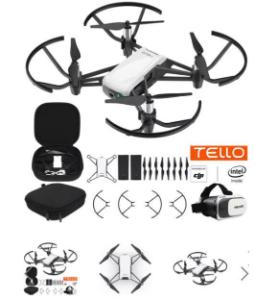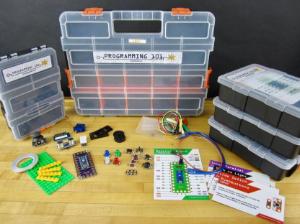"Amazing Grace" Hopper-Inspired Coding Activity
Middle and High School
Introduce your students to trailblazing Rear Admiral Grace Hopper (1906-1992), aka Queen of Computer Code and Amazing Grace. They may not know it, but they can thank Grace Hopper every time they turn on their computers.
Grace Hopper was an American computer scientist, mathematician, and U.S. Navy rear admiral. One of the first programmers of the Harvard Mark I computer (IBM Automatic Sequence Controlled Calculator), she was a pioneer of computer programming who invented one of the first linkers (a computer system program that takes object files and combines them into a single executable file).
Hopper transformed computer science with her passion for problem-solving and refusal to do things the way they had always been done. Her story can inspire all students to embrace science and math.
What did Grace Hopper Invent?
- While working on the UNIVAC I and II (the first general-purpose electronic digital computer design for business applications), Hopper pioneered the idea of automatic programming and explored new ways to use the computer to code. In 1952 she developed the first compiler called A-0, which translated mathematical code into machine-readable code—an essential step toward creating modern programming languages.
- In 1953, Hopper proposed writing programs in words rather than mathematical symbols. She began working on an English-language compiler, and in 1956 her team was running FLOW-MATIC, the first programming language to use word commands. FLOW-MATIC used common English words and was designed for data processing purposes. She also demonstrated how programs could be written in word-based languages other than English. By creating word-based languages, Hopper helped expand computer access to people without an engineering or math background. In a 1980 interview, Hopper said, “What I was after in beginning English language [programming] was to bring another group of people able to use the computer easily…I kept calling for more user-friendly languages. Most of the stuff we get from academicians, computer science people, is in no way adapted to people.”
Use this activity to help your students tap into Grace Hopper’s vision of computer access for everyone.
Activity: EVO Ozobots STEAM made simple!
Use the Ozobots to develop student understanding and knowledge of computer science, coding, and creative hacking. Students use color coding to create paths for the Ozobot to navigate life cycles and forces and investigate motion. Using the Ozoblockly program, students practice math skills, including variables and functions, increase their understanding of abstract concepts, and improve tech skills. OzoBlockly has five skill levels for beginners to master coding. Color Codes teach basic CS skills, critical thinking, and debugging. Includes Get Started activities.
K-12 students can code Evo two ways: screen-free with Color Code markers and online with Ozobot Blockly visual programming. Ozobot Classroom software unlocks teacher training and free access to hundreds of lessons in the lesson library.
1. Sea History 168, Autumn 2019: Grace Hopper, The Woman Who Brought the Navy into the Digital Age; Kathleen Broome Williams
Recommended Products
[StartProductBlock]

Aeronautics: Coding Drone Using DJI Tello
Students use multiple languages to code this drone. Includes tutorials addressing drone blocks, Python, and Scratch
[EndProductBlock]
[StartProductBlock]

Crazy Circuits Classroom Set: Programming 101
Basic programming and modifying more complicated code. Uses distance sensors, servos, seven-segment displays, speakers, and LEDs to inspire, not just teach writing code.
[EndProductBlock]
